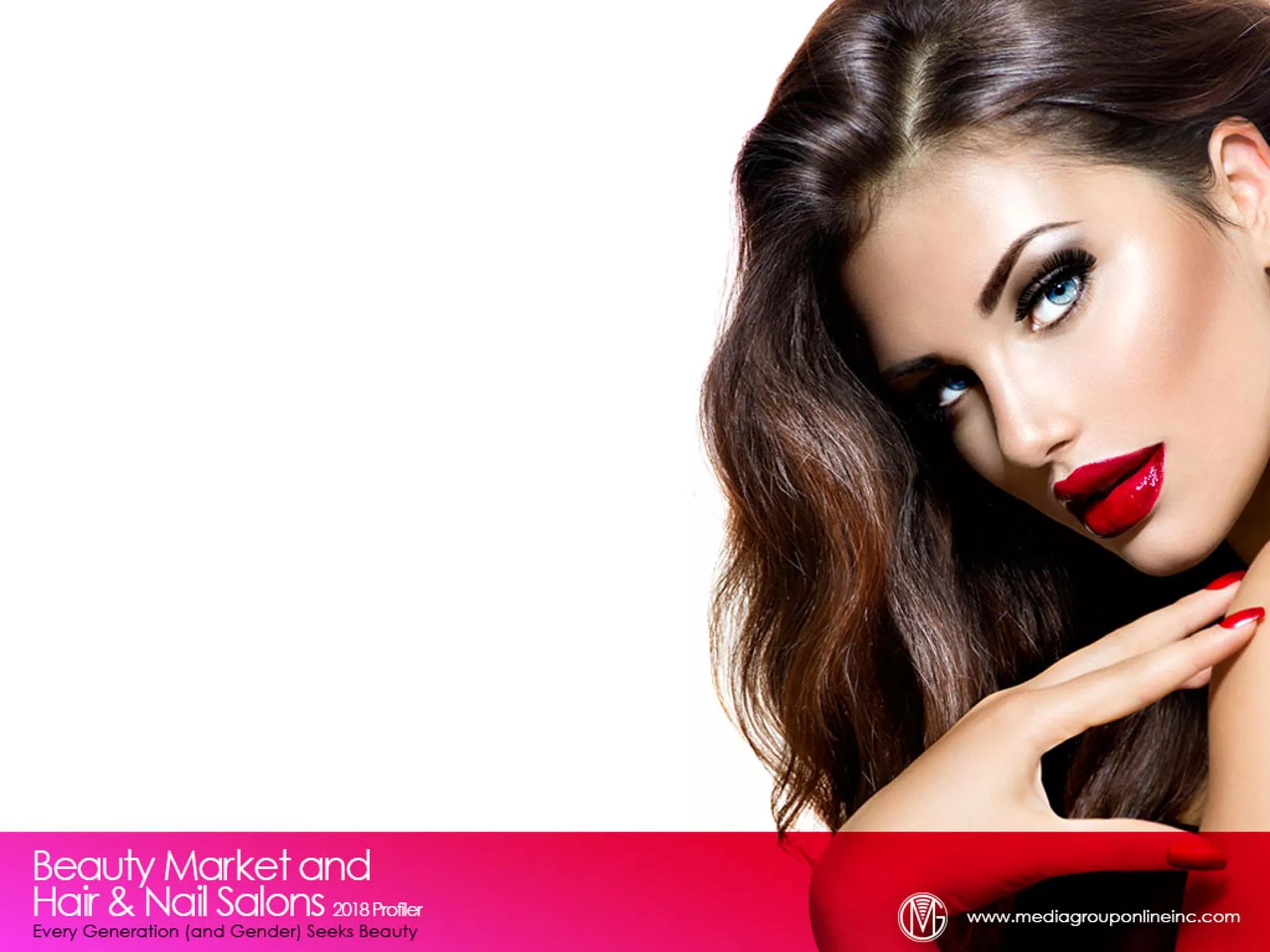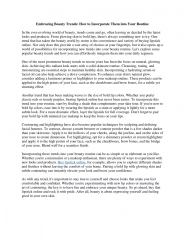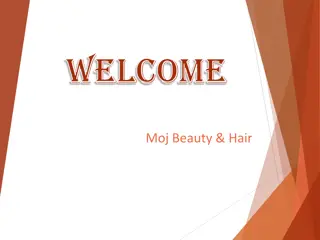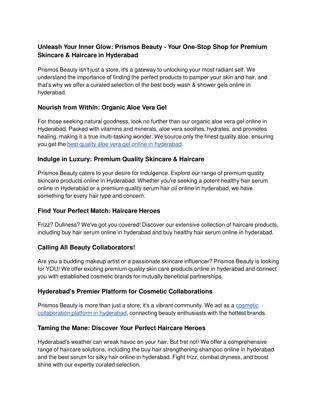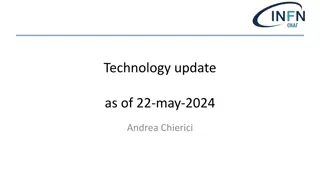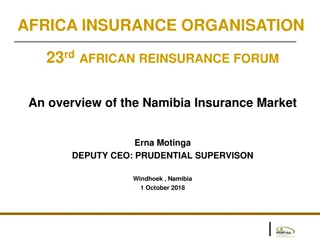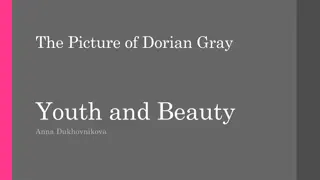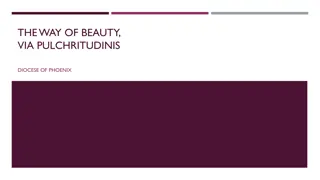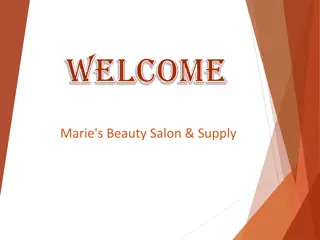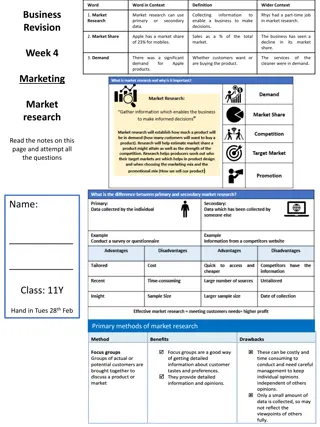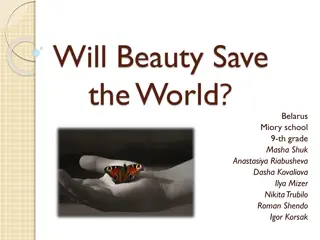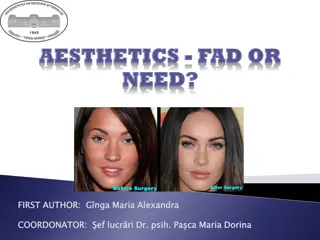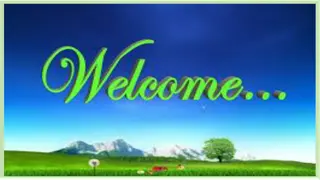Beauty Market Trends and Insights
Global spending on color cosmetics has surged ahead of women's apparel, driven by social media influence and the rise of themed makeup trends. In the US, beauty specialist retailers like Ulta and Sephora lead the market, while nail salon revenues remain steady with a shift in technician work environments. Advancements in the beauty market include eco-conscious products and virtual reality technology for personalized beauty experiences, catering to a diverse customer base.
Uploaded on Sep 21, 2024 | 1 Views
Download Presentation

Please find below an Image/Link to download the presentation.
The content on the website is provided AS IS for your information and personal use only. It may not be sold, licensed, or shared on other websites without obtaining consent from the author.If you encounter any issues during the download, it is possible that the publisher has removed the file from their server.
You are allowed to download the files provided on this website for personal or commercial use, subject to the condition that they are used lawfully. All files are the property of their respective owners.
The content on the website is provided AS IS for your information and personal use only. It may not be sold, licensed, or shared on other websites without obtaining consent from the author.
E N D
Presentation Transcript
More Interest in Looking One s Best According to Euromonitor International, YOY global spending on color cosmetics has significantly outpaced women s apparel, 7.1% compared to 3.1% for 2016. Social media is a boost to standalone beauty retailers, such as Ulta and Sephora. Shoppers are increasingly trying to copy the looks they find on Instagram, Pinterest and YouTube. The rise of the selfie and themed makeup are also market drivers. The three largest beauty specialist retailers in the US are Ulta, with $4.85 billion in 2017 revenues, Sephora with an estimated $4.4 $4.9 billion and Bath & Body Works with $3.85 billion in revenues. Consumers enjoy the ability to play with the makeup.
More Revenue, Fewer Shops Professional Consultants & Resources reported that total 2016 US salon services and salon retail sales increased 3% to $62 billion. Hair coloring is an anchor service, attracting customers for other services. Highlights are in; bright colors are out. The total number of US salons and barbershops declined 8.7% to 270,000 for 2016, continuing a trend of the larger rental suites replacing traditional commission-based salons. There is also a shift toward large family-economy chains. Coloring revenues increased 3.6% from Baby Boomers and a huge demand for fashion hair color. Revenues for keratin straightening and perms increased 2% and cutting and styling increased 2.8%. Revenue from men s services, including hair color, increased.
Nail Salon Revenues Turn Dull Nail s 2017 2018 Big Book reported a total of $8.53 billion was spent on nail services during 2017, the same amount as 2016. During 2017, there were 439,751 nail techs in the US, an 11.7% increase from 2016. There was a total of 56,386 nail salons, a decrease of 19.1% from 2016. Almost 30% increased their prices during the past year, and an additional 23.4% increased them 1 2 years ago.
Nail Technicians Insights Almost a third, or 31.6%, of nail professionals do not work in a traditional salon environment. More than one in five, or 21.9%, are salon owners doing nails, 18.6% are booth renters and 10.1% are employees of a salon; 74% provide all their supplies. Average weekly service income was $653.14 for 2017, an increase of 3.7% from 2016. Thirty-one percent make more than $750 per week, 8.1% make $651 to $750. More than a third, or 37.9%, earn less than $350 per week. More than a third, or 37.2%, use a traditional paper calendar system to book client appointments; 18.4%, text; 16.1%, a computer software program; 13.0%, an online booking program; 9.2%, a smartphone booking app; and 6.1%, other.
Beauty Market Advancements Hair products that are eco-conscious are becoming more popular. The most cited green feature across all generations is all-natural ingredients. Free-from claims are compelling for younger customers, while plant-derived ingredients resonate with older customers. Retailers, such as Sephora, are using virtual reality to show customers how they would look in different types of makeup. This technology could be a boost for local hair salons and skincare retailers, too. Gen Z girls are being pressured to improve their appearance, and are purchasing more beauty products. Almost two-thirds of US female teens use YouTube for beauty, 56% follow beauty brands on social media and 45% have posted about beauty.
Advertising Strategies Hair and nail salons and bars & nightclubs and dance clubs can partner for cross-promotional campaigns. Salons offer a mobile coupon for free cover charge at clubs, while clubs distribute mobile coupons for free salon samples and/or a discounted first visit. Host consumer events, such as makeovers, seasonal fragrances (discover the new spring scents!) and classes, to generate foot traffic and make your store an experience destination. Feature more men in your advertising to generate more sales of men s personal care products.
New Media Strategies Local hair and nail salons could benefit greatly from influencer marketing programs, as explained in January and February 2018 New Media Insights Reports on the Media Group Online Website. Create how-to videos, featuring hair stylists and nail technicians and customers, which include insights/testimonials from customers. Post the videos on social media and share them with customers during their appointments to view on their smartphones. Encourage customers to upload their own makeup-recommendation videos and product- review videos with your salon s hashtag.


